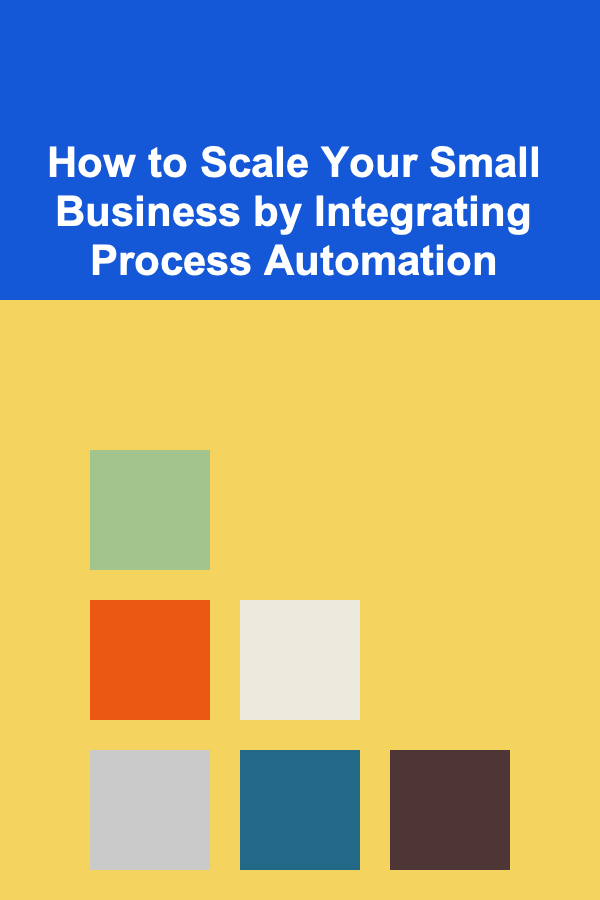
How To Write a Cover Letter That Lands Interviews
ebook include PDF & Audio bundle (Micro Guide)
$12.99$5.99
Limited Time Offer! Order within the next:

Writing a cover letter can be a daunting task for many job seekers, especially when aiming to create one that not only captures the attention of hiring managers but also convinces them to invite you for an interview. A well-crafted cover letter should not only reflect your skills, experience, and enthusiasm but also convey why you're the perfect fit for the company and the role. In this guide, we'll break down the key elements of writing an effective cover letter and share tips and strategies to help you craft a letter that stands out.
Why Cover Letters Matter
A cover letter is your opportunity to introduce yourself to a potential employer in a way that a resume simply cannot. It gives you a chance to tell a story about your professional journey, explain your interest in the company, and highlight how your skills align with the job description.
Hiring managers often receive hundreds of resumes for a single job posting. A well-written cover letter helps your application rise to the top of the pile. It's your chance to go beyond a list of qualifications and demonstrate personality, enthusiasm, and why you are uniquely suited to the role.
Key Elements of a Strong Cover Letter
1. Personalization and Addressing the Hiring Manager
One of the most important aspects of a cover letter is personalization. Generic cover letters that begin with "To whom it may concern" or "Dear Sir/Madam" lack the personal touch that shows effort and initiative. Research the hiring manager's name and address them directly. It's easy to find this information on the company's website, LinkedIn, or job listing.
Using the hiring manager's name not only demonstrates that you've taken the time to personalize your letter but also sets a positive tone for the rest of the communication.
If you can't find the hiring manager's name, use a specific title such as "Dear Marketing Manager" or "Dear Customer Service Hiring Team," rather than using vague greetings.
2. A Strong Opening
The opening paragraph is your first impression, and it needs to grab attention immediately. This is where you introduce yourself, mention the role you're applying for, and express why you're excited about the opportunity. Avoid starting with a dry sentence like "I am writing to apply for the position." Instead, make it engaging.
For instance, consider starting with:
- A personal connection: "Having been a fan of your company's innovative approach to sustainability for years, I'm thrilled to apply for the position of Marketing Manager."
- A reference to a mutual connection: "I recently spoke with Jane Smith, who recommended I apply for the Software Engineer position, knowing my background in developing high-performance applications."
- A strong statement about your qualifications: "With over five years of experience in project management and a proven track record of successfully leading teams, I am excited to apply for the Project Manager position."
Your goal in the opening is to spark interest and give the hiring manager a reason to continue reading.
3. Highlight Your Relevant Skills and Experiences
In the middle section of your cover letter, you need to clearly demonstrate how your skills and experiences align with the job requirements. Focus on key accomplishments from your career that are directly related to the position.
- Be specific: Don't just say you have experience; show it. For example, instead of saying "I have experience managing teams," say "I successfully led a team of 10 to deliver a software product two months ahead of schedule, saving the company $50,000."
- Show your results: Use measurable outcomes to highlight your achievements. This could include revenue growth, project deadlines met, customer satisfaction improvements, or cost reductions.
- Match your qualifications with the job description: Identify the key skills listed in the job posting and provide examples from your career that demonstrate your proficiency in those areas.
Remember to keep the focus on what you can bring to the company. The cover letter is about demonstrating your value to the employer, not simply recapping your resume.
4. Show Your Enthusiasm for the Company
A generic cover letter often lacks enthusiasm. To stand out, show genuine interest in the company's mission, values, or culture. Research the company and find something that excites you about their work.
- Demonstrate your knowledge of the company: "I admire how your company has revolutionized customer service in the tech industry by implementing AI-driven solutions, and I would love to contribute to that innovation."
- Align your values with theirs: If the company is committed to sustainability or diversity, you can highlight how your personal values align with their initiatives.
Hiring managers want to know that you're excited about the opportunity to join their company. Showing that you've done your research and understand what they're about will set you apart from candidates who submit generic applications.
5. Convey Your Fit for the Role
Employers want to know that you're not just qualified for the job, but that you're also a good fit for the team and company culture. Demonstrate that you understand the role and how your skills, experience, and personality will help you excel.
For example, if the job requires strong teamwork skills, explain how you've successfully worked in collaborative environments in the past. If the company values innovation, highlight your creativity and ability to think outside the box.
6. A Strong Closing
The closing of your cover letter should express appreciation for the employer's time and consideration. Be confident and proactive by expressing your desire for an interview and outlining the next steps.
For example, you could say: "I would love the opportunity to discuss how my background and skills can contribute to your team's success. I look forward to the possibility of meeting with you to further explore this opportunity."
Be sure to include a call to action, such as inviting the hiring manager to contact you for an interview or a meeting. Don't leave it open-ended. Show that you are eager to take the next step.
7. Professional Sign-Off
Finish your cover letter with a professional closing, such as:
- "Sincerely,"
- "Best regards,"
- "Kind regards,"
Follow the closing with your name and, if applicable, your contact information (although this may be included in your resume or email signature).
Best Practices for Writing a Cover Letter
While the elements discussed above provide the framework for a great cover letter, here are some additional best practices to ensure your cover letter stands out:
Tailor Each Cover Letter to the Job
A common mistake job seekers make is sending out the same generic cover letter for every application. Tailoring your cover letter to each specific job is crucial for standing out. Customize the content to match the job description and the company's values.
Keep It Concise
Hiring managers are busy, so it's important to keep your cover letter concise and to the point. Aim for a length of around 300 to 400 words. If you can convey your skills and enthusiasm effectively in fewer words, that's even better.
Proofread for Errors
A cover letter with spelling and grammatical errors gives a poor first impression. Always proofread your cover letter multiple times before submitting it. Consider using tools like Grammarly to catch errors and ensure your writing is polished.
If possible, ask a friend or colleague to review your cover letter and provide feedback. Sometimes, a fresh set of eyes can spot mistakes or areas for improvement that you might have missed.
Use Action-Oriented Language
Use strong, action-oriented verbs to describe your accomplishments and contributions. Phrases like "led a project," "developed strategies," and "increased revenue" show your active role in achieving results.
Avoid Repetition
Your cover letter should complement your resume, not repeat it. Don't simply restate your resume's bullet points. Instead, use the cover letter to tell a story, provide context, and explain how your experience can directly benefit the company.
Be Honest
While it's tempting to embellish your skills and experience, be truthful in your cover letter. If you're not familiar with a particular skill, don't claim expertise in it. Instead, express a willingness to learn and adapt.
Use the Right Tone
Your tone should be professional yet approachable. Strike the right balance between being formal and showing personality. You want to appear confident, but not arrogant.
Common Mistakes to Avoid
- Being Too Vague: Avoid using generic statements like "I am a hard worker" or "I am a quick learner." These don't provide any specific evidence of your capabilities.
- Rewriting Your Resume: Your cover letter should complement, not duplicate, your resume. Focus on explaining how your skills match the job requirements.
- Lack of Enthusiasm: If you don't show any excitement about the role or the company, hiring managers will notice.
- Using an Overused Template: While it's okay to use a template as a guide, make sure to personalize it and make it unique to you.
- Ignoring the Job Description: A common mistake is ignoring the job description and not addressing the specific qualifications or skills mentioned in the posting.
Conclusion
Writing a cover letter that lands interviews requires a combination of personalized storytelling, clear communication of your qualifications, and enthusiasm for the role. By following the tips and strategies outlined above, you can create a cover letter that not only grabs the attention of hiring managers but also sets you up for success in landing your next job. Be sure to tailor each cover letter to the specific role, demonstrate how your skills align with the job requirements, and show genuine interest in the company. With a little effort and attention to detail, your cover letter can be the key to opening doors and landing interviews.

How to Organize Your Home Gym with Smart Storage Solutions
Read More
How to Scale Your Small Business by Integrating Process Automation
Read More
How to Soundproof Your Doors to Block Out Noise
Read More
How to Stage Your Home to Highlight Its Architectural Features
Read More
How To Protect Your Financial Accounts Online
Read More
10 Creative Ways to Organize Your Vision Insurance Receipts
Read MoreOther Products

How to Organize Your Home Gym with Smart Storage Solutions
Read More
How to Scale Your Small Business by Integrating Process Automation
Read More
How to Soundproof Your Doors to Block Out Noise
Read More
How to Stage Your Home to Highlight Its Architectural Features
Read More
How To Protect Your Financial Accounts Online
Read More